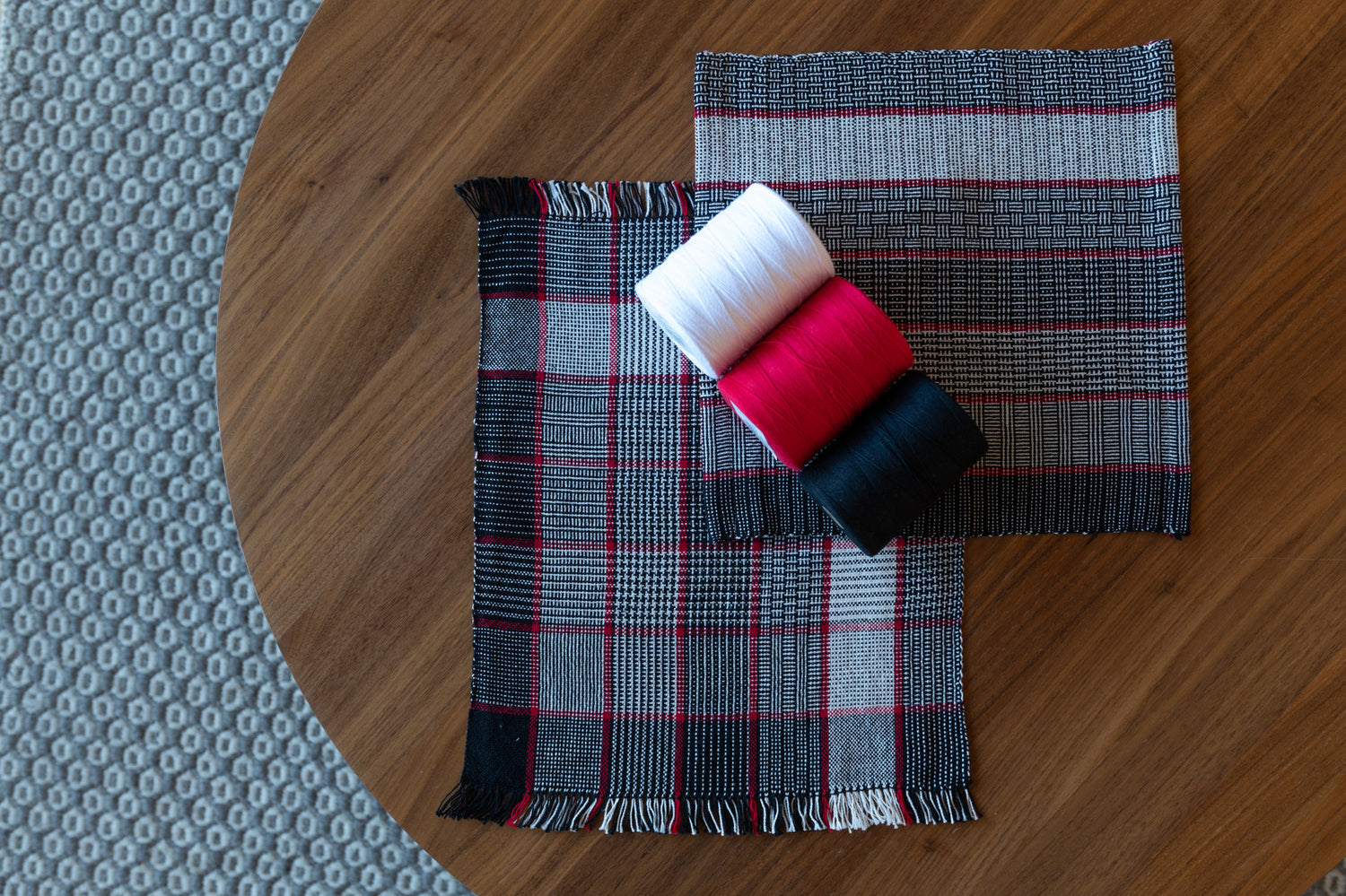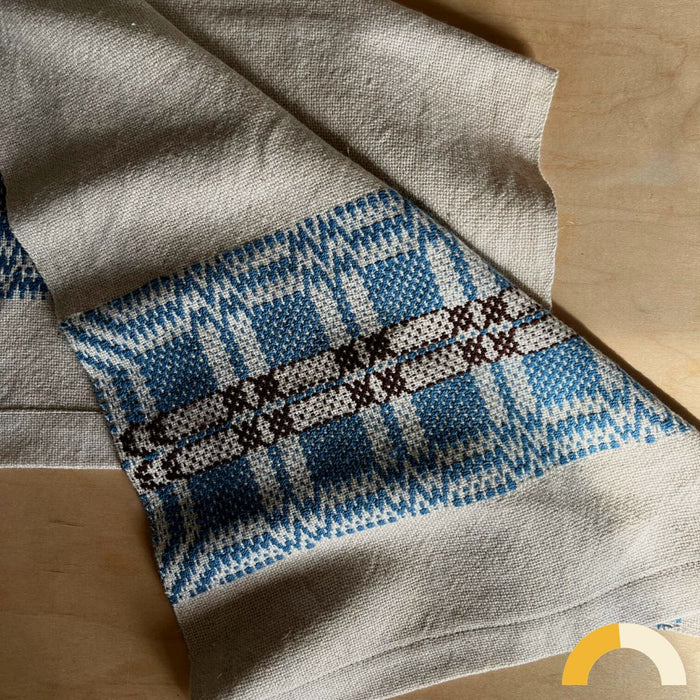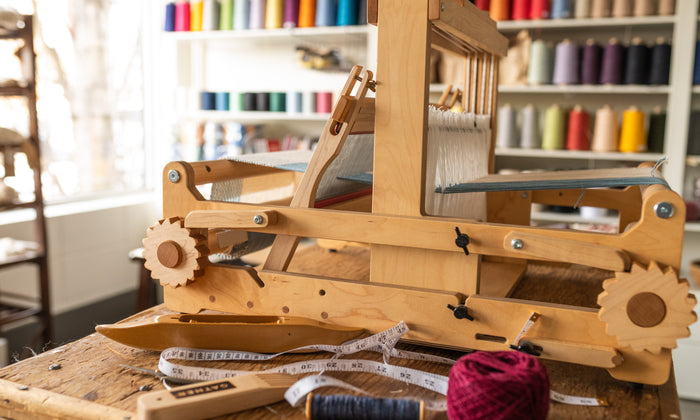How does colour and weave work?
We always start beginner workshops with this basic truth: weaving is interlacing of two sets of threads. Your warp runs the length of your project, and your weft goes over and under the warp to create cloth. This means that sometimes the warp is running over top of the weft; sometimes the weft is running over top of the warp.
So far, so good! Now zoom way in and think about each point where the warp and weft interlace. Each interlacement (at least in plain weave) is like a tiny criss cross. In a drawdown of a weaving draft, each square represents one interlacement. This is the smallest unit of a piece of weaving–we can think of it as one small building block of the overall weave.
Here’s where the colour part of colour and weave comes in.
When warp and weft are different colours, our eyes see the colour that is on top as being the colour of the whole interlacement. Think of a weaving draft drawdown: when the warp is going over the weft, we colour in that square with the warp colour. When the weft is on top, we colour in that square with the weft colour.
With one solid colour in the warp and one solid colour in the weft, this doesn’t have too much of an impact. The two colours visually blend, and everything looks lovely.
But picture a project where we change the colour in the warp AND the colour in the weft every four threads… or every two threads… or every thread!
All of a sudden those little squares add up to squares, pinwheels, and lines. The combination of the colour alterations and the structure of the weave lets you build shapes and create small graphic patterns.
See Gather's Colour and Weave patterns here.
Colour alterations usually follow a short, simple pattern using only two colours.
For example, you might do two of white, then two of black. Because colour and weave patterns often pair a light colour with a dark one, it’s common to see instructions that use L for light and D for dark. Two white, two black would be written as LLDD–short for light, light, dark, dark. Two white, three black would be LLDDD; one white, one black would be LD; and so on. Usually there are anywhere from one to four ends of each colour before the colour changes.
Simple colour and weave patterns like houndstooth use the same colour pattern in both warp and weft, and stick to the same pattern across the width and length of the piece.
There’s nothing saying you have to stick to one thing, though! You can change colours in different ratios across the project or mix up one colour pattern in warp with another in the weft.
More complex colour and weave techniques like log cabin and shadow weave use distinct blocks of pattern to create the illusion of three dimensions on a flat woven surface. As with so many weaving techniques, the beginning is simple but the sky’s the limit!








